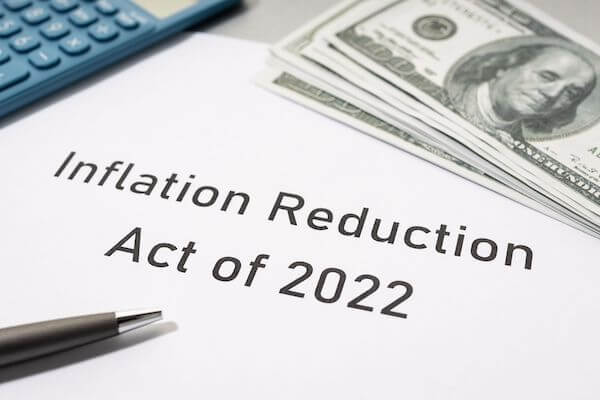As the year draws to a close, here at Tuffy & Associates we are thinking about all the ways that our clients can save money. With that in mind, here are 6 year-end financial strategies that you might want to consider implementing if you want to finish off the year on a financial high note.
1. Make Use of the Credits, Deductions & Rebates from the Inflation Reduction Act
A substantial number of new credits, deductions and rebates were made available to Americans interested in making their residential and commercial properties more energy sufficient as part of the 2022 Inflation Reduction Act.

Similar initiatives were also rolled out in 2023 for those interested in purchasing electric and hybrid vehicles.
While these incentives will be available in 2024, using them in 2023 may be more beneficial for you.
2. Add to Your Retirement Account Before Year-End
Contributing to your retirement account is an excellent way to reduce taxes while building a nest egg.

For example, you could put $22,500 into your 401(k), with an extra $7,500 applicable for investing if you are 50 and older.
The Roth IRA contribution limit at year-end is $6,500, with $1,000 applicable as a catch-up for 50+ investors.
If you have a SIMPLE IRA plan, the contribution limit is $15,500, with $3,500 additional for those age 50 and up. A contribution limit of $66,000 is applicable to investors holding an SEP IRA and for those with a Solo 401(k), the contribution limit is $66,000, with an additional $7,500 that 50+ investors can add to boost their savings.
You might also want to consider a Roth conversion, especially if there’s room to do so without pushing yourself into a higher tax bracket for the year.
3. Implement Required Minimum Distributions (RMDs) and Charitable Contributions
For those of you who want to take a required minimum distribution (RMD) amount from your IRA and for others who want to donate, there may be a tax advantage to making charitable contributions directly from your IRA rather than simply writing a check.

A donation of up to $100,000 in 2023 is considered a “qualified charitable distribution” and besides satisfying the annual RMD requirement, it would be excluded from your gross income rather than being treated as an itemized deduction.
4. Donate Appreciated Assets
You can maximize contributions to a charity if you donate appreciated assets. They might include anything from real estate to personal property, artwork, collectibles, and more.

This is a good alternative to selling those assets, paying the capital gains tax as a result of that sale and then donating the after-tax amount.
Just know that not all charities can or want to accept such gifts.
5. Reduce Your Health Care Costs
Health care costs typically make up a large chunk of many peoples’ budgets.

If you are covered by a high-deductible health plan, there are several advantages to setting up a health savings account (HSA).
The advantages of such a plan include a tax deduction limited to $3,850 for self-only coverage and $7,750 for family coverage in 2023, in addition to $4,150 and $8,300 for 2024. A catch-up contribution of $1,000 is applicable to investors aged 55+.
If your employer offers a health flexible spending arrangement (FSA), making use of such a plan will allow you to pay for qualified medical and dental expenses with pre-tax money that you contribute to the plan.
6. Use Bonus Depreciation and Expensing Options to Reduce Business Income
For our self-employed clients, bonus depreciation rules can significantly reduce their taxable income and significantly lower the cost of equipment.

For 2023, up to $1,160,000 of qualifying business property can be expensed for tax purposes.
Under the bonus depreciation rules, 80% of the cost of an asset placed in service during 2023 can be written off, with the remainder of it being devalued over the depreciable life of the asset.
If you are considering the purchase of a substantial business asset and some of your income in 2023 can offset the cost, it may be appropriate to make that purchase before the end of the year.
Review Your Investment Portfolio
Finally, we can help you with a year-end review of your investment portfolio so that you can identify any necessary adjustments to your overall investment strategy. Be sure to email us at [email protected] to learn more.

